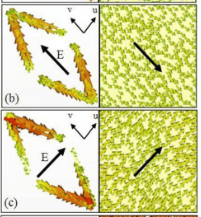Surface current distribution Charge flow over a surface || Metamaterial || Metasurface.
Surface current distribution Charge flow over a surface we describe it by a surface current density.
𝐾 = 𝑑𝐼 𝑑𝑙
The word ‘k’ is the current per unit width, k will vary from point to point over the surface. When the flow of charge is distributed throughout a three-dimensional region we call it volume current density and represented by J.
𝐽 = 𝑑𝐼 𝑑𝑎 (current per unit area)
The direction of the net current J on each side of the unit cell is given by a red arrow. The current distribution on the surface at the resonance frequency and the vector sum of the current distribution on top and bottom( the ground plane) are directed in opposite directions at resonance frequencies. The surface currents propagating in opposite directions generate circulating currents within the surface.
Such opposite directed currents on top and bottom layers result in a high magnetization quality. The oppositely directed currents of different polarized incident EM waves create a strong B-field between the two layers in the dielectric region and hence a high magnetization value resulting in large relative permeability μ However, the oppositely directed currents often cause transverse electrical dipole resulting in large permittivity. Although there is electric dipole coupling between the top and bottom layers. For all of the above reasons cross-polarization conversion produces. On the other hand, an E-field generated on the surface parallel to the incident EM waves E-field produces electrical resonances. These resonances simultaneously give strong EM resonances which maximize cross-polarized reflected waves and minimize polarized reflected waves resulting in high PCR in the proposed Metasurface.


Comments
Post a Comment